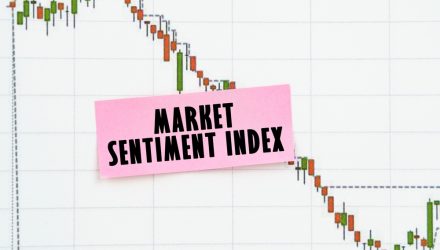Soft landing, hard landing, or no landing at all? It’s the big question facing investors and advisors right now, with the market’s sentiment – and its apparent desire to almost will itself through whatever the Fed can throw at lingering inflation – a key factor in the first half of the year. Single indicators like spending or consumer confidence may convey some information, but investors may want to go deeper into market sentiment, a key part of Richard Bernstein Advisors’ (RBA) investment process.
Many investors are likely familiar with indicators like the VIX, also known as the fear index. Driven by option prices, the VIX helps measure volatility. There are other interest indexes like the high-low index, which compares the number of stocks hitting their 52-week highs compared to their 52-week lows, as well as the bullish percent index (BPI) which tries to assess how many stocks are showing bullish patterns in point and figure charts.
Consumer confidence dropped in January to add to the crop of available data points, and an interesting contrast to the big consumer spending numbers that are keeping inflation sticky. Each of these offers a lens on the vast universe of economic and stock market data available online. However, it may be more useful to look at singular indicators as part of a broader process that looks to understand the market sentiment, with RBA’s profit cycle process as one to consider.
RBA’s look at sentiment aims to find strong returns when capital is scarce, using sentiment indicators to help find capital scarcities and excesses. Rather than just stand on their own, sentiment indicators are read along with other data points, an added screen for already promising offerings picked up in RBA’s process.
According to RBA CEO & CIO Richard Bernstein, one of the most surprising aspects of the current sentiment data last month was the number of investors “enthralled with speculation” and still active in areas like cryptocurrencies and certain tech sectors.
“Most sentiment measures are very short-term oriented. We’re not traders, we’re investors, we don’t find a lot of value in those short-term sentiment indicators,” Bernstein said in a prior conversation with VettaFi. “And I think the data would actually show that most of them are pure noise, they don’t show anything at all other than giving people things to talk about.”
One ETF that employs RBA’s approach is the iMGP RBA Responsible Global Allocation ETF (IRBA), on top of the firm’s various other ETF strategy packages. IRBA actively invests in ETFs “x-rayed” to identify the best stock exposures for a given part of the profit cycle, charging 69 basis points. The strategy has outperformed its ETF Database Category Average over the last three months, returning 1.8% in that time.
Investors have a lot on their plates right now, with all sorts of data points coming at them at all times trying to pin down what the market is feeling. Rather than defer to just one indicator, it may be worth considering how RBA’s approach uses market sentiment as part of a broader, top-down process.
For more news, information, and analysis from Richard Bernstein and the whole team at RBA, visit the Richard Bernstein Advisors Channel.

